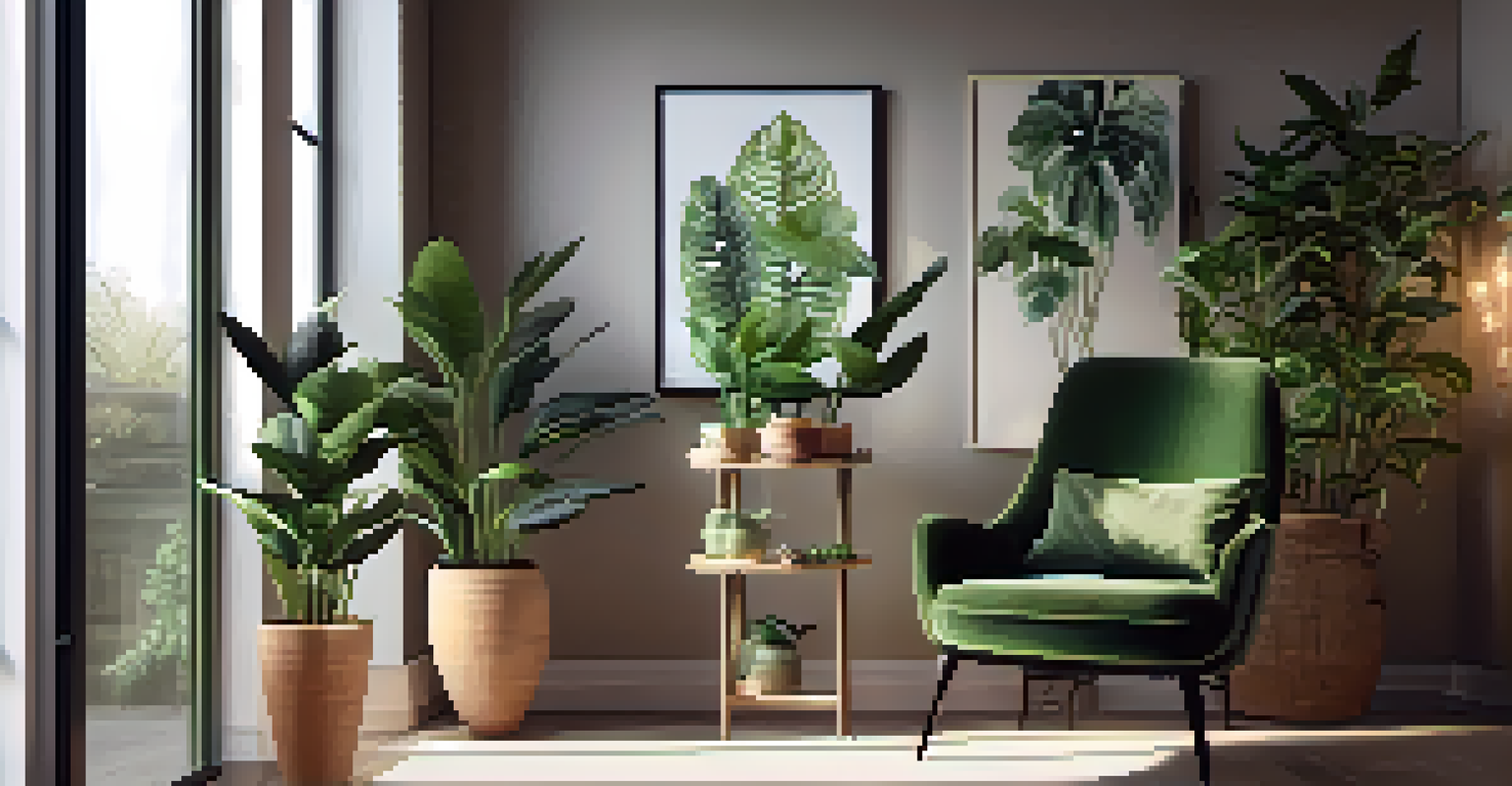Creating a Green Oasis: Indoor Garden Design Ideas

Understanding the Benefits of Indoor Gardening
Indoor gardening offers a range of benefits beyond just aesthetics. It can improve air quality, boost mood, and even enhance productivity. Imagine nurturing plants that not only beautify your space but also contribute to your overall well-being.
Gardening adds years to your life and life to your years.
Moreover, indoor gardens can serve as natural humidifiers, helping to regulate moisture levels in your home. This is particularly useful in dry climates or during winter months when heating systems can suck the moisture out of the air. A few houseplants can make a world of difference.
Additionally, gardening indoors can be a therapeutic hobby, providing a sense of accomplishment and relaxation. As you watch your plants grow, you may find a new appreciation for nature, even within the confines of your home.
Choosing the Right Plants for Your Space
Selecting the right plants is crucial for creating your indoor oasis. Consider factors like light availability, temperature, and humidity when choosing your greenery. For instance, succulents thrive in bright light, while snake plants are excellent for low-light conditions.

Another aspect to consider is your lifestyle. If you travel frequently or have a busy schedule, opt for low-maintenance plants like pothos or ZZ plants. These resilient species can withstand some neglect, making them perfect for the on-the-go gardener.
Indoor Gardening Boosts Well-Being
Nurturing plants not only beautifies your space but also enhances air quality, mood, and productivity.
Lastly, think about the size of your space and the plants you want to incorporate. A mix of tall, leafy plants and smaller varieties can create visual interest and balance. Don't be afraid to experiment with various types to find what resonates with you.
Creative Indoor Garden Layouts and Ideas
The layout of your indoor garden can transform your space significantly. Consider using vertical gardening techniques, such as wall-mounted planters or hanging pots, to maximize floor space while adding a touch of creativity. This approach can turn a plain wall into a lush green feature.
To plant a garden is to believe in tomorrow.
Another idea is to create a dedicated plant corner with a mix of pots and shelving units. Grouping plants together can create a mini-ecosystem, enhancing humidity and fostering growth. Plus, it's a stunning visual focal point in your home.
You can also incorporate plants into your existing furniture. For example, placing a few small pots on bookshelves or using a plant stand next to your favorite chair can seamlessly blend nature with your decor.
Utilizing Natural Light in Your Indoor Garden
Natural light plays a vital role in the success of your indoor garden. Assess the lighting conditions in your space, and position plants accordingly. South-facing windows usually provide the brightest light, making them ideal for sun-loving species.
If your space lacks sufficient natural light, consider using grow lights. These specialized bulbs mimic sunlight and can help your plants thrive, even in darker corners of your home. They come in various styles, from simple LED strips to decorative fixtures.
Choose Low-Maintenance Plants
Selecting resilient plants like pothos or ZZ plants can ensure your indoor garden thrives, even with a busy lifestyle.
It's also essential to rotate your plants regularly to ensure even growth. Just like us, plants lean towards the light, so turning them helps maintain a balanced shape and prevents them from becoming lopsided.
Creating a Watering Schedule for Indoor Plants
Establishing a watering schedule is crucial for keeping your indoor plants healthy. Overwatering is one of the most common mistakes, so it's essential to understand each plant's needs. Some plants prefer to dry out completely between waterings, while others thrive in consistently moist soil.
One effective way to determine when to water is by checking the top inch of the soil. If it feels dry, it's time to water. Additionally, consider factors like the season and humidity levels, as these can affect how quickly soil dries out.
Using self-watering pots can also alleviate some of the guesswork. These pots have a reservoir that allows plants to absorb water as needed, ensuring they maintain optimal moisture levels, especially during hot summer months.
Incorporating Accessories to Enhance Your Indoor Garden
Accessories can elevate your indoor garden's aesthetic and functionality. Consider decorative pots that match your decor style, or opt for unique planters that add personality to your space. Remember, the pot is just as important as the plant it holds.
You can also incorporate plant stands, trellises, or hangers to create dynamic displays. These accessories not only save space but also give your plants the opportunity to grow upward, adding dimension to your garden.
Create a Year-Round Care Routine
Regular maintenance, including checking for pests and adjusting watering schedules, is essential to keep your indoor garden flourishing throughout the seasons.
Don't forget about tools like moisture meters or watering cans that can complement your gardening routine. Simple yet effective accessories can streamline your care process while keeping your plants happy.
Maintaining Your Indoor Garden Year-Round
Maintaining your indoor garden requires consistent care throughout the year. Regularly check for pests, disease, and signs of stress, as early intervention can save your plants. A little vigilance goes a long way in keeping your oasis thriving.
Seasonal changes can also affect your plants' needs. In the winter months, for example, you may need to adjust your watering schedule and provide additional humidity to counteract dry indoor air. Keeping an eye on these changes ensures your plants remain healthy.

Lastly, don't hesitate to prune and repot your plants as necessary. Pruning encourages growth and can help manage size, while repotting gives roots more space to thrive. A little maintenance can result in a flourishing indoor garden that brings joy all year long.